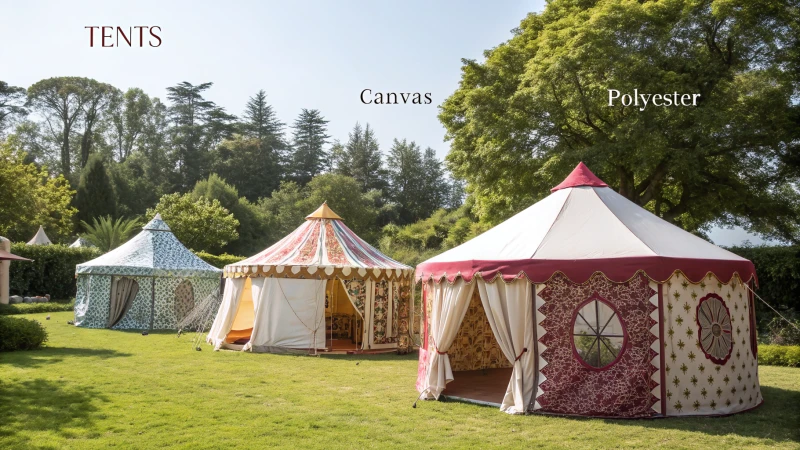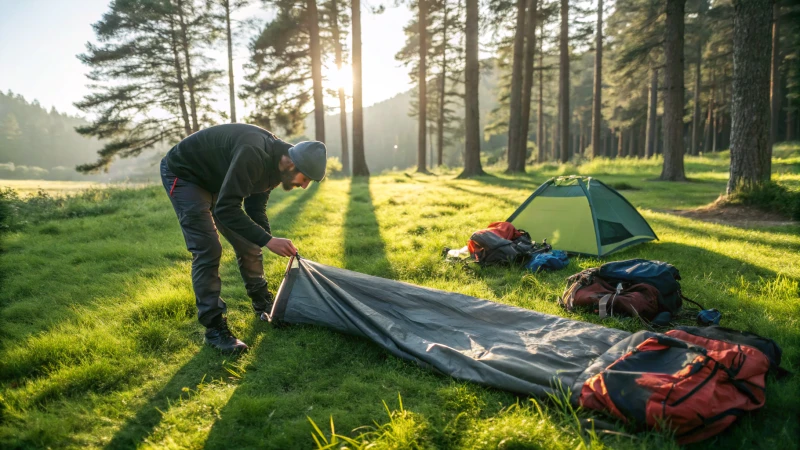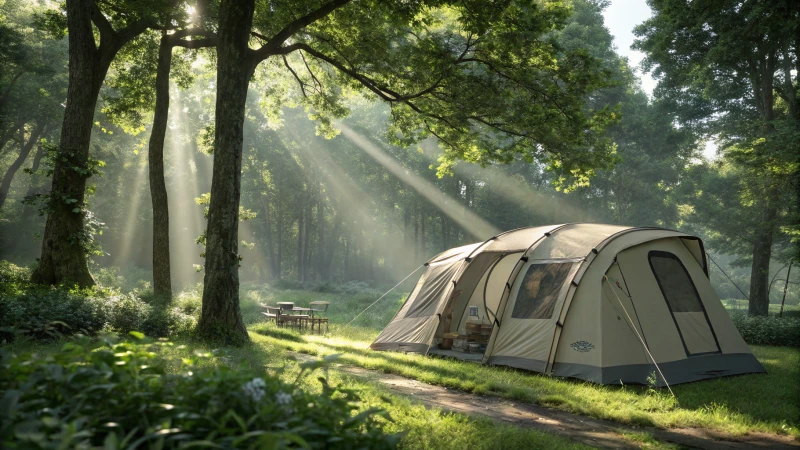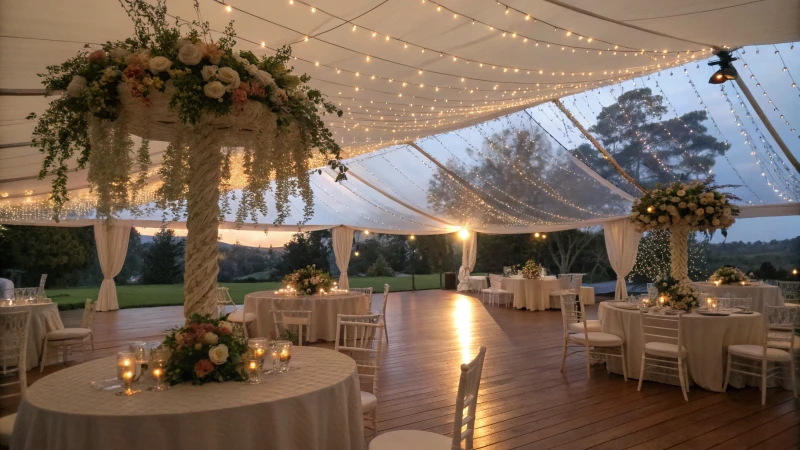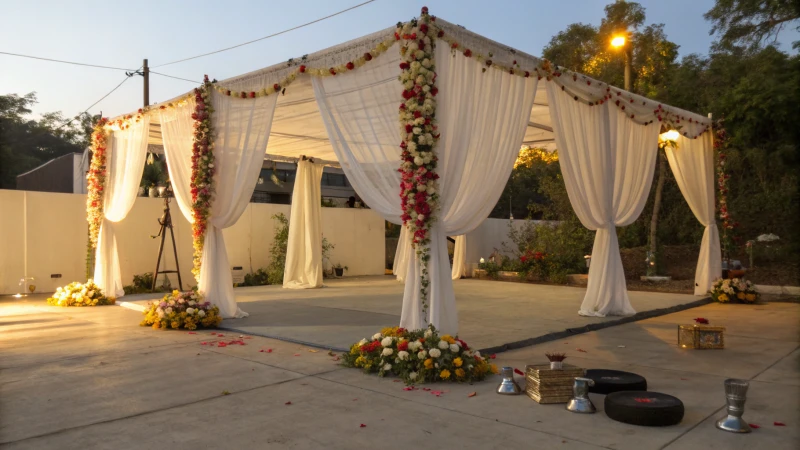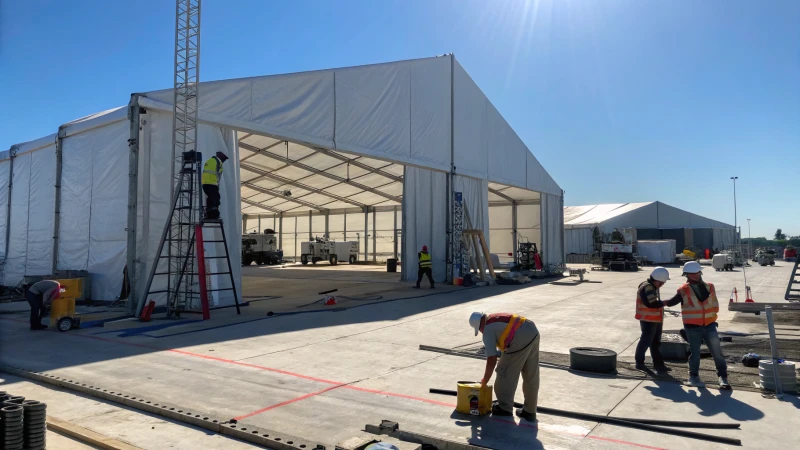
Remember when you were a kid, waiting for the circus tent to pop up overnight? Installing a warehouse tent isn’t quite that magical, but understanding the timeline is crucial for your business planning.
Typically, installing a warehouse tent can take anywhere from 1 to 7 days. Smaller tents might be ready in just 1-2 days, while larger or more complex setups could stretch to a week, depending on size, design complexity, and site conditions.
From my own experience running a tent rental and sales business, I’ve learned that the size and complexity of the tent, along with site conditions, play pivotal roles in installation times. It’s not just about setting up poles and fabric; sometimes it feels like orchestrating a mini-construction project. Especially with larger tents, having an experienced team is like having a well-rehearsed orchestra that can play a symphony without missing a beat. This can significantly streamline the process and ensure that everything goes off without a hitch, even if the weather decides to throw in some surprises.
Warehouse tents always take 7 days to install.False
Installation time varies from 1 to 7 days based on size and complexity.
Smaller warehouse tents can be installed in 1-2 days.True
Smaller tents typically require less time, often just 1-2 days.
What Factors Affect the Installation Time of a Warehouse Tent?
Ever had to set up a warehouse tent and wondered why it sometimes feels like building a small village? Well, you’re not alone! From tent size to team experience, here’s what you need to know.
Warehouse tent installation time hinges on size, site conditions, tent type, team experience, weather, and prep work. A small tent might take a day, while larger setups could stretch to a week.
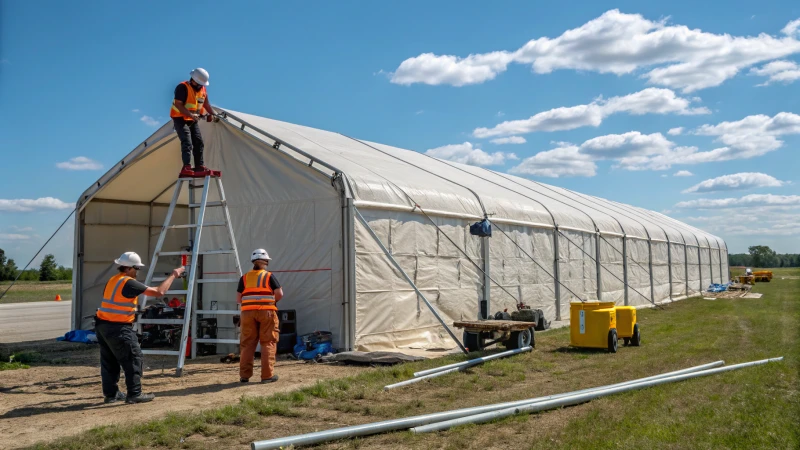
Size of the Tent
Let’s start with the obvious: the size of the tent. Picture this: setting up a cozy 10m x 20m tent feels like putting together a jigsaw puzzle on a quiet afternoon, wrapping up in 1-2 days. But when you’re dealing with a sprawling 30m x 60m beast, it’s like assembling a giant Lego set without instructions, often taking 5-7 days. Larger tents simply demand more hands on deck and more patience. Learn more about assembly processes1.
Site Conditions
Now imagine arriving at the site, only to find uneven ground that looks like it’s seen better days. If it’s level and stable, setup is a breeze—think spreading a picnic blanket on smooth grass. But if the terrain is soft or bumpy, you’ll need more prep work, like adding supports or leveling the ground, which can stretch the timeline.
| Site Condition | Installation Impact |
|---|---|
| Level Ground | Faster installation |
| Uneven/Soft Terrain | Requires additional groundwork |
Learn more about site preparation methods2.
Type of Tent and Complexity
The type of tent also plays a role. Frame tents are like your go-to simple recipes—quick and satisfying. But clear span tents are more like gourmet meals that require permanent anchoring and extra care. Add features like climate control or walls, and you’re in for a longer haul. Discover how permanent anchoring3 affects setup time.
Experience of the Installation Team
Experience makes all the difference. I remember working with a team that knew their stuff—it was like watching seasoned chefs in action; everything just clicked. A skilled crew can cut down on time dramatically. But if your team is new to the game, expect some hiccups along the way. Discover how team expertise impacts efficiency4.
Weather Conditions
And then there’s the weather. It’s the wild card you can’t control. On sunny days, everything sails smoothly. But throw in some rain or wind, and it’s like trying to barbecue in a hurricane—everything slows down.
Pre-Installation Work
Before you even start thinking about poles and fabric, there might be groundwork to tackle—like leveling the earth or securing permits. It’s like prepping your kitchen before cooking; it takes time but makes everything else smoother.
Check out permit requirements for temporary structures5 for insights.
Understanding these factors helps you plan better and ensures everything gets set up efficiently. Trust me, with the right prep and team, even the biggest tent can feel like a breeze to assemble.
Larger tents require more manpower for installation.True
Bigger tents need more complex assembly, thus more manpower.
Weather conditions have no impact on tent installation time.False
Adverse weather like rain or wind can delay installation.
How Does Tent Size Impact Installation Duration?
Setting up a tent for your event? The size can greatly impact how long it takes to install. Here’s my personal take on what to expect.
The bigger the tent, the longer it takes to install. Larger tents come with more parts and complexities, making their setup naturally longer. However, with the right planning and team, even the biggest projects can run smoothly and efficiently.
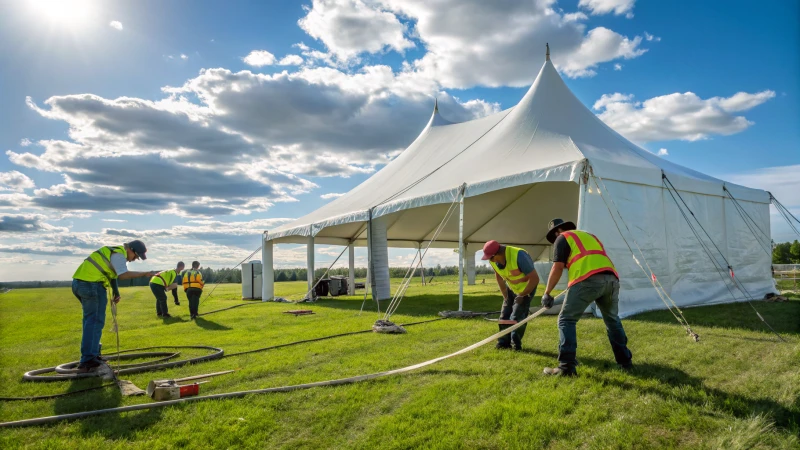
Understanding Tent Sizes and Installation Time
Over the years, I’ve learned that choosing the right tent size is like picking out the perfect outfit—it can make or break your event. Smaller tents, say around 10m x 20m, usually take about 1 to 2 days to set up. I remember once underestimating how long a larger setup would take—it was a 30m x 60m tent, and boy, did it surprise me when it stretched into nearly a week of installation!
| Tent Size | Installation Duration |
|---|---|
| Small (10m x 20m) | 1 to 2 days |
| Medium (20m x 30m) | 2 to 4 days |
| Large (30m x 60m) | 5 to 7 days |
Factors Influencing Installation Time
Site Conditions
From my experience, site conditions are a game changer. A flat and prepared ground is your best friend—it speeds things up immensely. But if you’ve got uneven terrain, be ready for some extra groundwork. I once had to set up on sand, and let me tell you, it was like trying to build a castle on a beach! For instance, level ground6 allows for faster installations than soft surfaces like sand.
Type and Complexity of Tent
Not all tents are created equal. Frame tents, for instance, tend to be quicker to install due to their simpler structure. But if you’re going for a clear span tent with all its open space glory, be prepared for a longer setup time. And don’t even get me started on adding extras like flooring or HVAC systems7—those can really stretch your timeline.
Experience of the Installation Team
Having an experienced team can make all the difference. I once had a team that had never worked at a certain site before, and the unfamiliarity added a day to our schedule. But when you have seasoned pros on your side, everything just clicks into place.
Additional Considerations
- Weather Conditions: I’ve learned the hard way that Mother Nature doesn’t always cooperate. Rainy or windy conditions can slow things down significantly.
- Pre-Installation Work: Ground prep and permits are often overlooked but crucial steps. They can tack on extra days if you’re not careful.
By keeping these factors in mind, you can ensure that your tent setup is as efficient as possible. And don’t forget to check out tent installation guides8 for even more tips!
Small tents take less than 2 days to install.True
Small tents, like 10m x 20m, typically require 1 to 2 days.
Uneven terrain speeds up tent installation.False
Uneven terrain requires more groundwork, slowing installation.
What Are the Challenges of Installing a Tent on Uneven Ground?
Ever tried setting up a tent on uneven ground? It’s like solving a puzzle with missing pieces!
Installing a tent on uneven ground comes with challenges like maintaining stability, ensuring effective water drainage, and optimizing comfort. Solutions include using specialized tents, adjusting stakes, and leveraging natural features for support.
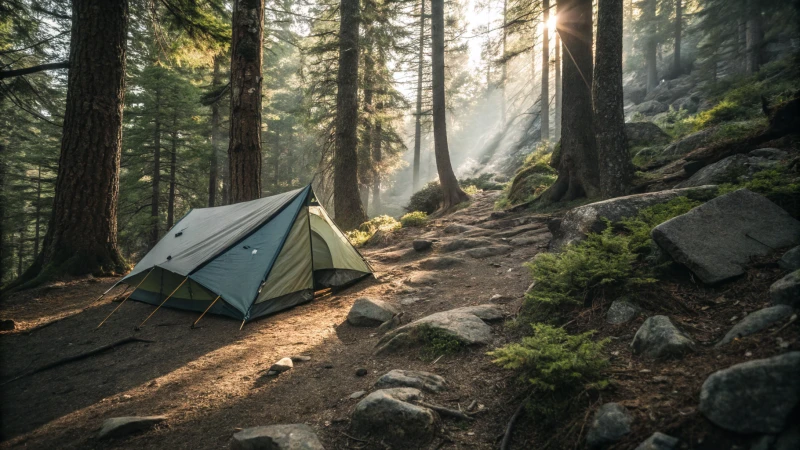
Stability Concerns
I remember my first camping trip with friends; I was all geared up to impress them with my tent-pitching skills. But as soon as we arrived at our campsite, I realized the ground was anything but flat. The challenge of ensuring stability on that uneven surface was real. Uneven ground can cause tension imbalances, making your tent vulnerable to wind. Here’s what I learned:
- Use adjustable stakes: These can be lifesavers, allowing you to secure the tent more effectively by adapting to the terrain’s quirks.
- Leverage natural features: If there are trees or rocks nearby, use them as additional anchoring points. They can offer much-needed support against unexpected gusts of wind.
Water Drainage Issues
There’s nothing worse than waking up in a puddle after a night of rain. On that trip, I quickly realized that choosing the right spot and taking preventive measures could save us from a soggy disaster. Here’s what you can do:
- Select elevated spots: Opt for higher ground to keep water from pooling under your tent.
- Create trenches: Small trenches around your tent can act like mini rivers, directing water away from your cozy sleeping area.
- Use tarps strategically: A tarp underneath your tent adds an extra layer of protection against moisture.
Comfort Considerations
Sleeping on a bumpy surface was not part of my ideal camping experience. I learned that a good night’s sleep is crucial for the adventures that follow. Here’s how you can ensure comfort:
- Utilize sleeping pads: They provide cushioning and help level out those annoying bumps.
- Choose self-leveling tents: Some tents come with flexible poles and bases that adapt to the ground’s contours, offering a smoother sleep surface.
Selecting Suitable Tents
Picking the right tent makes all the difference when dealing with uneven ground. During my adventures, I’ve found these types particularly helpful:
- Dome tents9: Their flexibility makes them perfect for accommodating uneven surfaces.
- Geodesic tents10: Known for their structural strength, they withstand challenging conditions remarkably well.
Practical Tips
| Challenge | Solution |
|---|---|
| Stability | Use adjustable stakes and natural anchors |
| Water Drainage | Elevate site, trenching, tarps |
| Comfort | Sleeping pads, self-leveling tents |
| Suitable Tent Types | Dome, geodesic |
By understanding these challenges and preparing accordingly, you can ensure a successful and comfortable outdoor experience even on uneven terrain. Explore options like adjustable stakes11 and self-leveling tents to enhance your setup further. Happy camping!
Adjustable stakes improve tent stability on uneven ground.True
Adjustable stakes help compensate for uneven terrain, enhancing stability.
Geodesic tents are unsuitable for uneven surfaces.False
Geodesic tents are known for their structural strength on uneven ground.
Why Is an Experienced Installation Team Important?
Ever tried putting together a giant puzzle without instructions? That’s what installing a large warehouse tent feels like without an experienced team.
Having an experienced installation team ensures efficient, high-quality work and reduces risks. Their expertise in complex setups and problem-solving saves time and minimizes costly errors, leading to successful project outcomes.
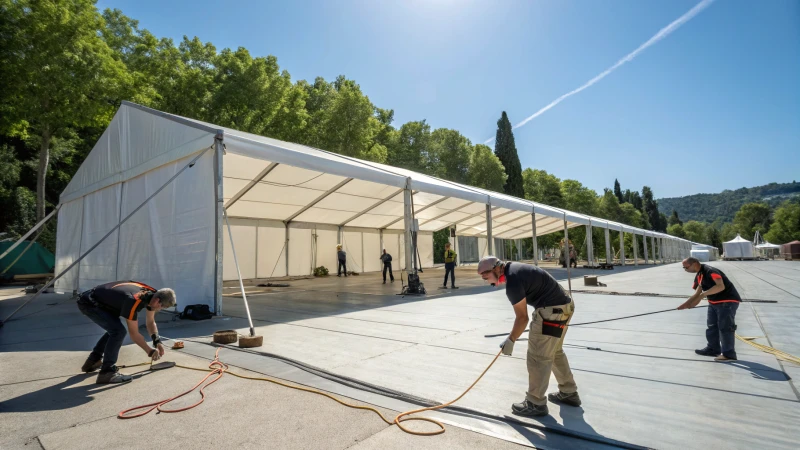
I remember the first time I oversaw a tent installation project. It was a massive undertaking, and I quickly learned that the real magic lies in the hands of a skilled team. Their expertise transformed what seemed like an insurmountable challenge into a streamlined process.
The Role of Expertise in Efficient Installations
An experienced installation team brings invaluable expertise to the table. This includes knowledge of best practices, awareness of potential pitfalls, and the ability to anticipate problems before they arise. For instance, when setting up large warehouse tents12, a seasoned team knows how to optimize layout and positioning, ensuring stability and functionality.
Impact on Project Timeline and Costs
Time is money, especially in business projects. An experienced team can significantly reduce the installation time by efficiently organizing tasks and using specialized tools. This efficiency minimizes labor costs and reduces downtime. I recall a project where complex tent structures13 that might take an inexperienced team several days were completed much faster by professionals.
| Project Size | Experienced Team Time | Inexperienced Team Time |
|---|---|---|
| Small Tent | 1-2 days | 3-4 days |
| Medium Tent | 2-3 days | 5-6 days |
| Large Tent | 4-5 days | 7+ days |
Quality Assurance and Safety Protocols
An experienced team adheres to strict safety standards and quality protocols. They are trained to follow industry regulations, ensuring that installations are safe and compliant. This expertise reduces the risk of accidents and structural failures, providing peace of mind for project stakeholders. They also know how to handle adverse weather conditions14 efficiently, ensuring that installations remain on schedule and secure.
Problem Solving and Adaptability
Experienced teams excel at problem-solving. They can quickly adapt to unexpected challenges, such as site-specific issues or last-minute changes in design specifications. Their ability to think on their feet and find solutions ensures that the project progresses smoothly, regardless of unforeseen circumstances. This adaptability is crucial in maintaining project momentum and avoiding costly delays.
Having learned from experience, I can confidently say that choosing an experienced installation team is one of the best investments you can make for your project. Their efficiency, quality assurance, and problem-solving abilities lead to smoother, more cost-effective installations.
Experienced teams reduce tent installation time by 50%.True
Experienced teams use efficient practices and tools, halving the time needed.
Inexperienced teams adhere to strict safety protocols.False
Inexperienced teams may lack training in strict safety and quality standards.
Conclusion
Installing a warehouse tent typically takes 1 to 7 days, depending on size, complexity, site conditions, and team experience. Proper planning ensures efficient setup and minimizes delays.
-
Exploring this link will provide insights into how assembly complexity impacts the time required to install large tents. ↩
-
Learn about various site preparation techniques that can expedite tent installation on challenging terrains. ↩
-
This link provides valuable information on anchoring methods, crucial for understanding installation time variances. ↩
-
Discover how the experience level of installation teams affects the speed and quality of tent setups. ↩
-
Understand the legal aspects and time implications of obtaining permits for temporary warehouse tent installations. ↩
-
Learn how pre-prepared, level ground can significantly expedite tent installation. ↩
-
Discover the impact of features like flooring on tent setup duration. ↩
-
Access comprehensive guides to help optimize your tent installation process. ↩
-
Discover how dome tents provide flexibility and adaptability on uneven surfaces. ↩
-
Explore the design features that make geodesic tents stable in challenging conditions. ↩
-
Learn how adjustable stakes can enhance tent stability on uneven ground. ↩
-
Explore why hiring professional tent installers enhances stability, ensuring safe and reliable structures. ↩
-
Learn how experienced teams optimize installation speed, reducing labor costs and project downtime. ↩
-
Discover strategies for safely managing tent installations under adverse weather conditions. ↩


